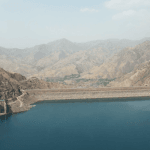In a report on the EU Strategy to reduce methane emissions, Members of the European Parliament called on September 28 for binding reduction targets on methane emissions to reach EU climate goals and improve air quality. The Environment, Public Health and Food Safety Committee (ENVI) adopted their report on the EU Strategy to reduce methane emissions with 61 votes to 10 and 7 abstentions.
MEPs called on the Commission to propose a new law with binding measures and methane reduction targets, covering all sectors to significantly reduce methane emissions in the EU by 2030 in line with the Paris Agreement. They also want a binding global agreement on methane at the COP26 meeting in Glasgow.
“With the catastrophic effects of this summer’s unprecedented floods, wildfires still being assessed, we need to intensify our efforts to tackle the challenges posed by extreme weather conditions. We need a quick win to tackle climate change!:Parliament’s rapporteur, Greek MEP Maria Spyraki said after the vote. “We need to act immediately and we need to achieve concrete results on reducing GHG emissions to protect our people and the planet today and in the future. By setting binding methane reduction targets, the EU can play a key role to get the rest of the world to do the same,” she added.
Parliament members underlined that reduction in human-caused methane emissions is one of the most cost-effective strategies to slow down climate change while at the same time improving air quality and protecting the health of citizens. This is because methane also contributes to ozone formation, which is a potent local air pollutant that causes serious health problems.
MEPs called for a mandatory monitoring, reporting and verification (MRV) for all methane emitting sectors as well as mandatory leak detection and repair (LDAR) programmes, covering the full supply chain in the energy and petrochemical sectors.
In spite of having reduced methane emissions with 22% between 1990 and 2018 in EU-28, agriculture represents the largest share of anthropogenic methane emission sources in the EU and offers the second-highest overall methane-emission reduction potential of any sector. The emissions are primarily driven by livestock numbers, particularly ruminants.
MEPs call on member states and the Commission to introduce effective and sustainable measures to address those emissions while ensuring that food continues to be produced in the most environmentally sustainable locations and that production is not just moved outside the EU.
Waste sector
Parliament members called on the Commission to set binding EU targets for commercial and industrial waste and to propose targets to cap the generation of residual waste in the review of the Waste Directive and Landfill Directive.
Landfill disposal is the most polluting way to manage waste both in terms of GHG emissions and other pollutants to air, soil and water. MEPs want to align the current Landfill Directive with the EU’s overall climate objectives and are concerned that in 2017, 15 member states were not fully meeting the obligation laid down in the directive to treat waste before landfilling
Energy sector
MEPs said they want to phase out all fossil fuels in the EU as soon as possible in order to reach climate neutrality by 2050 at the latest. As imports comprise over 80 % of the oil and gas consumed in the EU, MEPs call on the Commission to make all fossil fuel imports into the EU conditional on their compliance with EU regulations on MRV and LDAR on methane emissions. Leak detection efforts should be boosted with strict recordkeeping and a requirement to repair potential leaks within a clearly defined period.
The report is expected to be voted at the plenary session 18-21 October 2021 in Strasbourg.
The European Commission published the EU strategy to reduce methane emissions on 14 October 2020. Methane is the second biggest contributor to climate change after carbon dioxide (CO2), accounting in Europe for 10% of total greenhouse gas emissions. The agricultural, waste and the energy sectors are responsible respectively for 53%, 26% and 19% of methane emissions in the EU according to the European Environment Agency.







